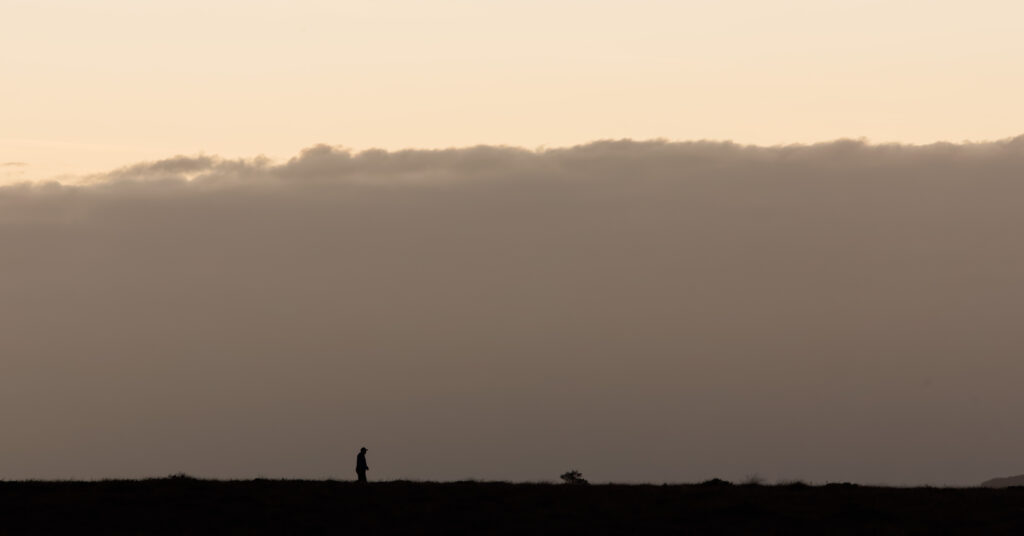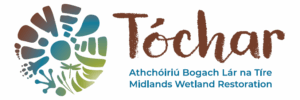Research shows Irish people value restored wetlands for their nature, environmental and community benefits


International Bog Day (Sunday 27th July) is about conservation and also a moment to celebrate the character, culture and quiet beauty of Ireland’s wetlands. Wetlands are one of Ireland’s most distinctive habitats, supporting thousands of rare species and vital to the country’s wildlife.
Research Findings
RED C research commissioned this year by the Tóchar Midlands Wetlands Restoration Project found that over half of people agree that restoration delivers ecological, economic and social benefits. Almost half (48%) of people believe the environmental benefits outweigh the economic ones. And 66% of adults in Ireland’s recognise wetlands’ role in flood prevention.
This Bog Day, the Tóchar Project is encouraging people to celebrate not just wetlands, but fens, an often lesser known yet equally important wetland type. While bogs are rain-fed, fens are wetland areas fed by groundwater or springs. Fens tend support a wide variety of plants and insects including orchids, dragonflies, reed bunting, and sedge warblers. Fens play a quiet but powerful role in:
- Absorbing excess rainfall, reducing flood risk
- Filtering water, improving quality downstream
- Storing carbon, like other peatlands
- Supporting rare biodiversity, often found nowhere else.
Commenting on the importance of our wetlands, Minister of State for Nature, Heritage and Biodiversity, Christopher O’Sullivan TD said:
“Fens and bogs are some of Ireland’s most iconic landscapes, but they’re also vital infrastructure. They manage floods, store carbon and support local well-being. Through the Tóchar project, we’re restoring them in a way that’s informed by science and led by the people who know these places best. The Midlands of Ireland is renowned for its diverse wetland areas, they are places of great beauty and wildness, I would encourage everyone to celebrate this unique landscape and visit a wetland, whether that be a bog of a fen this weekend.”
Fens are also home to rare and remarkable species, including the beautifully scented Butterfly Orchids. Ireland is home to two types: the Greater Butterfly Orchid, which prefers the lime-rich fens, and the Lesser Butterfly Orchid, more common in bogs. These creamy-white flowers emit a sweet clove or vanilla scent in the evenings to attract long-tongued moths for pollination. One of nature’s most delicate collaborations, the nectar lies deep in a 26mm floral tube, accessible only to moths like the Gold Spangle and Beautiful Golden Y, both recorded in Ireland since the late 19th century.
This is just one example of how fens quietly support rare biodiversity found nowhere else. More can be explored on www.irishmoths.net, and John Feehan’s Offaly Heritage video on the Lesser Butterfly Orchid is a must-watch for bogland enthusiasts.
Restoration of Bogs & Wetlands
Yet most of Ireland’s fens are in unfavourable condition, with drainage and scrub encroachment a major threat. The Tóchar Project managed by the National Parks and Wildlife Service (NPWS) and co-funded by the Government of Ireland and the European Union through the EU Just Transition fund is working to improve this and restore over 1,470 hectares of fen landscapes. Restoration plans are being developed for 36 fen sites, with the first phase beginning in the autumn. Initial sites include Scragh Bog (Westmeath) and Fin Lough (Offaly), with additional sites in Roscommon and Longford to begin restoration in 2026.
Wetlands are ideal spots for walking, wildlife spotting, sketching or family picnics. Many have interpretive trails or community-led restoration projects that make them welcoming and accessible some sites to consider on International Bog Day include.
- Corlea Bog Walk,Co Longford: As well as a few options for walks, it also includes an interpretive centre and a relic of prehistory: a togher – an Iron Age road – built in 148 BC. Known locally as the Danes’ Road, it is the largest of its kind to have been uncovered in Europe.
- Scragh Bog Nature Reserve, Co Westmeath: This is the best example in Ireland of the transition from alkaline fen to acidic raised bog and one of the few remaining in Europe. It contains a large number of uncommon plants and insects that are rare in Europe. It also has a nice looped walk and a boardwalk that brings you through some fen habitat.
- Abbeyleix Bog Project, Co Laois: Celebrating 25 years of community-led peatland conservation this year. There are two options, a long or a short looped walk. The walking trails at Abbeyleix Bog are open to the public every day of the year.
Tóchar Project Manager, Shirley Clerkin said:
“Our research shows that the public are not just supportive of restoration, but they understand its importance. Whether it’s reducing flood risk, protecting rare habitats or improving local access to nature, people recognise these are living landscapes that serve a real purpose. Fens are an important and unique wetland type and are considered rare. Restoring fens is complex, but it’s vital and we’re doing it with communities at the centre. Our goal is to create a sustainable future where conservation and rural livelihoods thrive side by side, adopting a deep connection between people and their natural heritage.”
To learn more about the Tóchar Project, share your views, or participate in upcoming initiatives, visit www.tocharwetlands.ie or follow us on Instagram @wetlandsrestoration or Facebook and LinkedIn Tóchar Wetlands Restoration.
